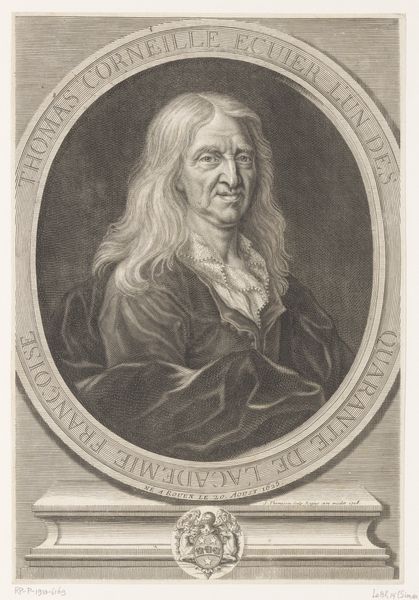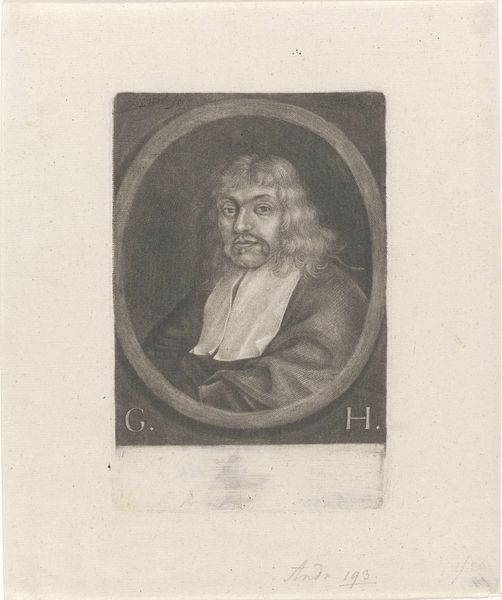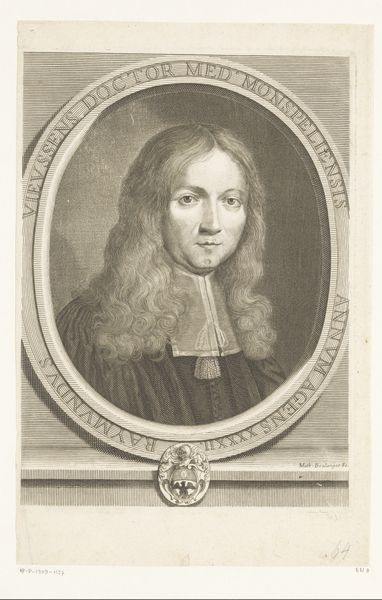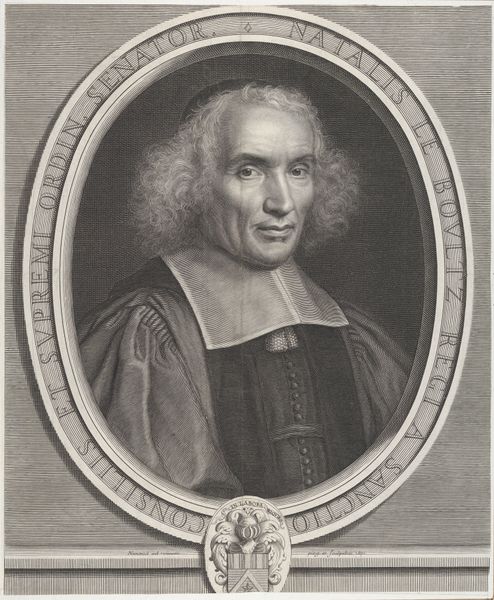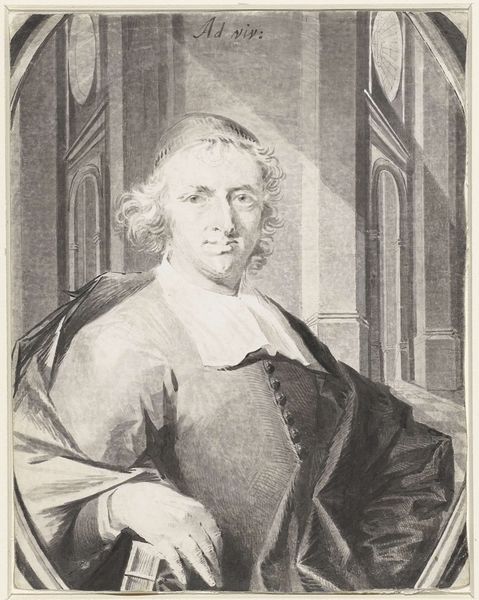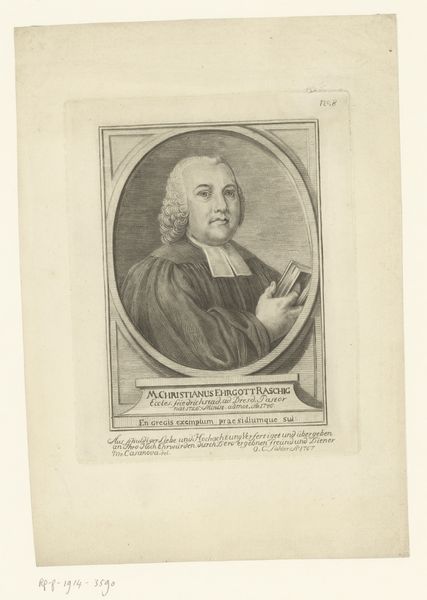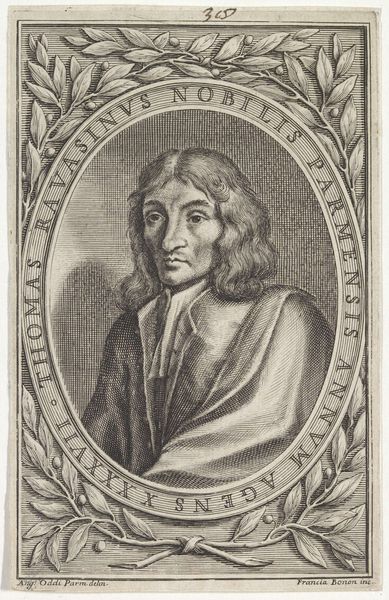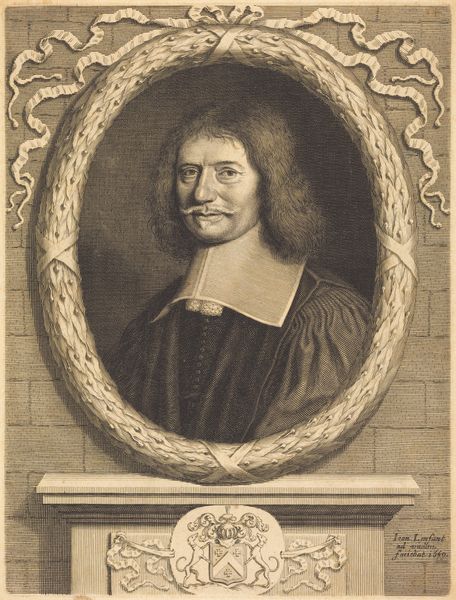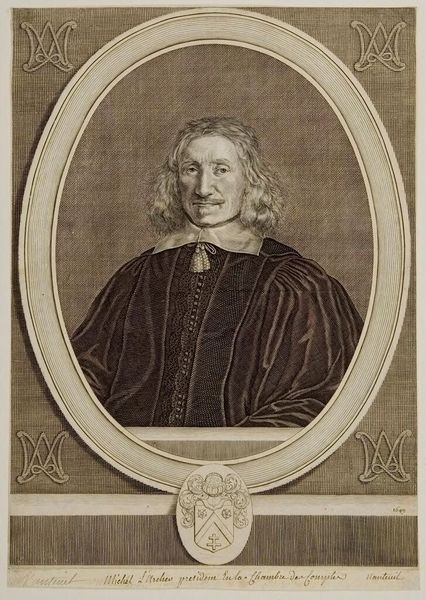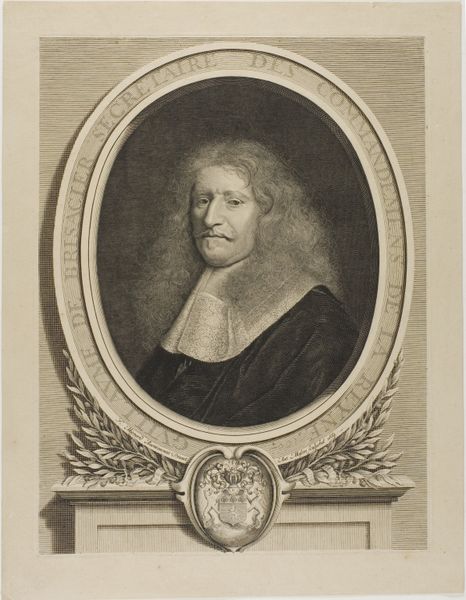
drawing, ink, charcoal
#
portrait
#
drawing
#
facial expression drawing
#
baroque
#
old engraving style
#
charcoal drawing
#
portrait reference
#
ink
#
charcoal
#
history-painting
Copyright: Public Domain
Editor: Here we have Joachim von Sandrart's portrait of Melchior Barthel, rendered in charcoal and ink. It strikes me as very composed, almost like a carefully constructed image of status. What can you tell me about it? Curator: Well, given Sandrart’s context, we can consider how portraits, particularly those of artists, functioned within 17th-century social and intellectual circles. This wasn't merely about capturing likeness. How might this image of Barthel, a sculptor, contribute to the construction of the artist's identity, particularly his intellectual and social standing? Consider, for instance, his pose – the hand placed on his chest. What does it signify? Editor: I suppose it projects sincerity, maybe even authority. Like he’s attesting to his own character. Was this a common visual language back then? Curator: Absolutely. But let’s dig deeper. Whose gaze are we invited into here? This wasn't necessarily a straightforward, objective representation but rather a carefully orchestrated performance, laden with societal expectations and power dynamics. What societal roles were these men playing and reflecting? Editor: That’s true! He’s presenting an idealized image of himself, one that aligns with the expectations of the art world and its patrons. It’s a construction. Curator: Precisely. And remember the baroque period itself – deeply entwined with the theatrical and performative aspects of power. Can we interpret Sandrart’s piece through that lens? And consider class: who commissioned such work, and what power dynamics are displayed when images were created for an elite. Editor: So it’s more than just a portrait; it's a document reflecting social aspirations and power structures. Thinking about who this was created for and by whom is a fascinating concept. I had never really looked at portraiture this way! Curator: Indeed. It allows us to unpack those assumptions and really look at how these historical artifacts were designed to position individuals in relation to one another.
Comments
No comments
Be the first to comment and join the conversation on the ultimate creative platform.
